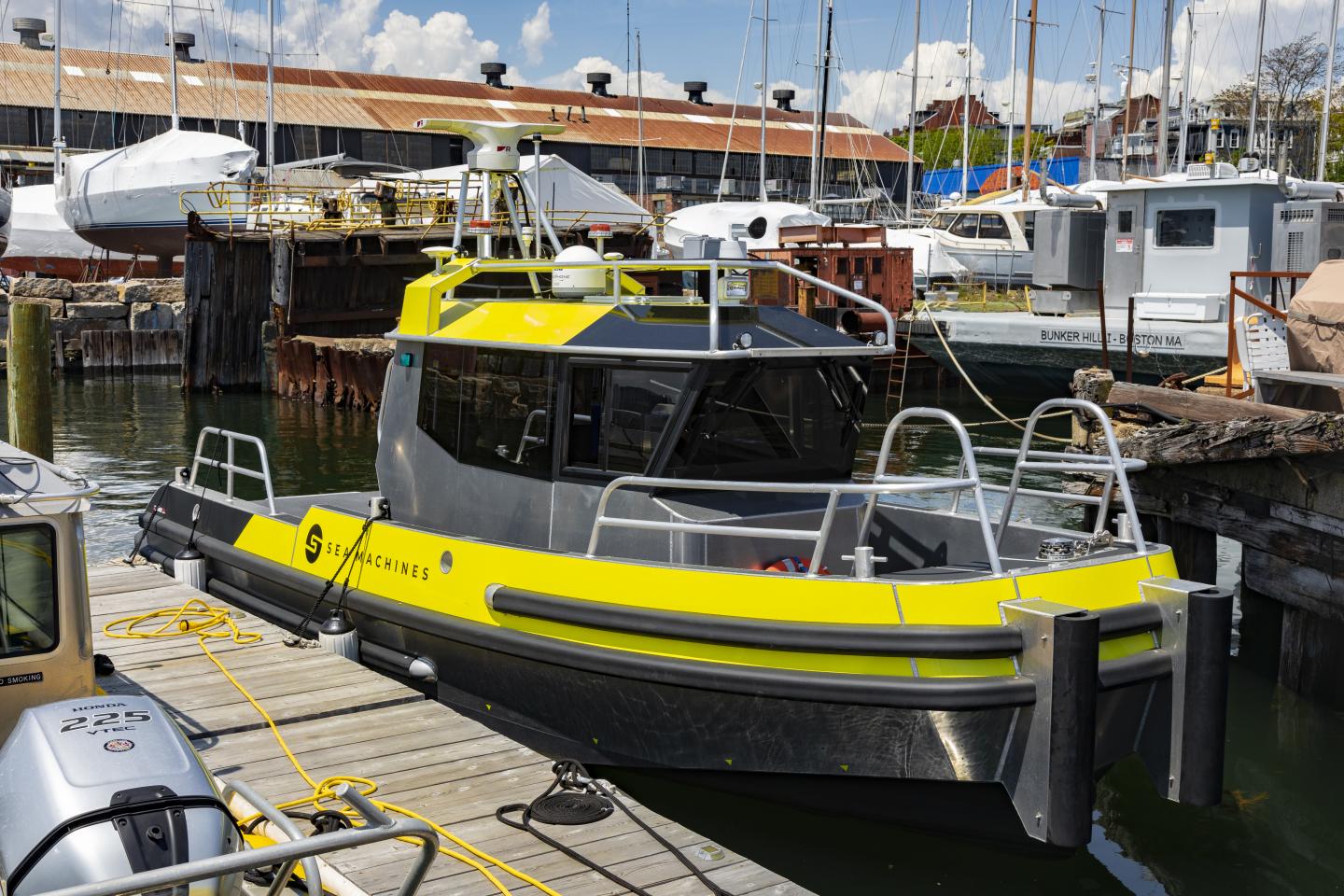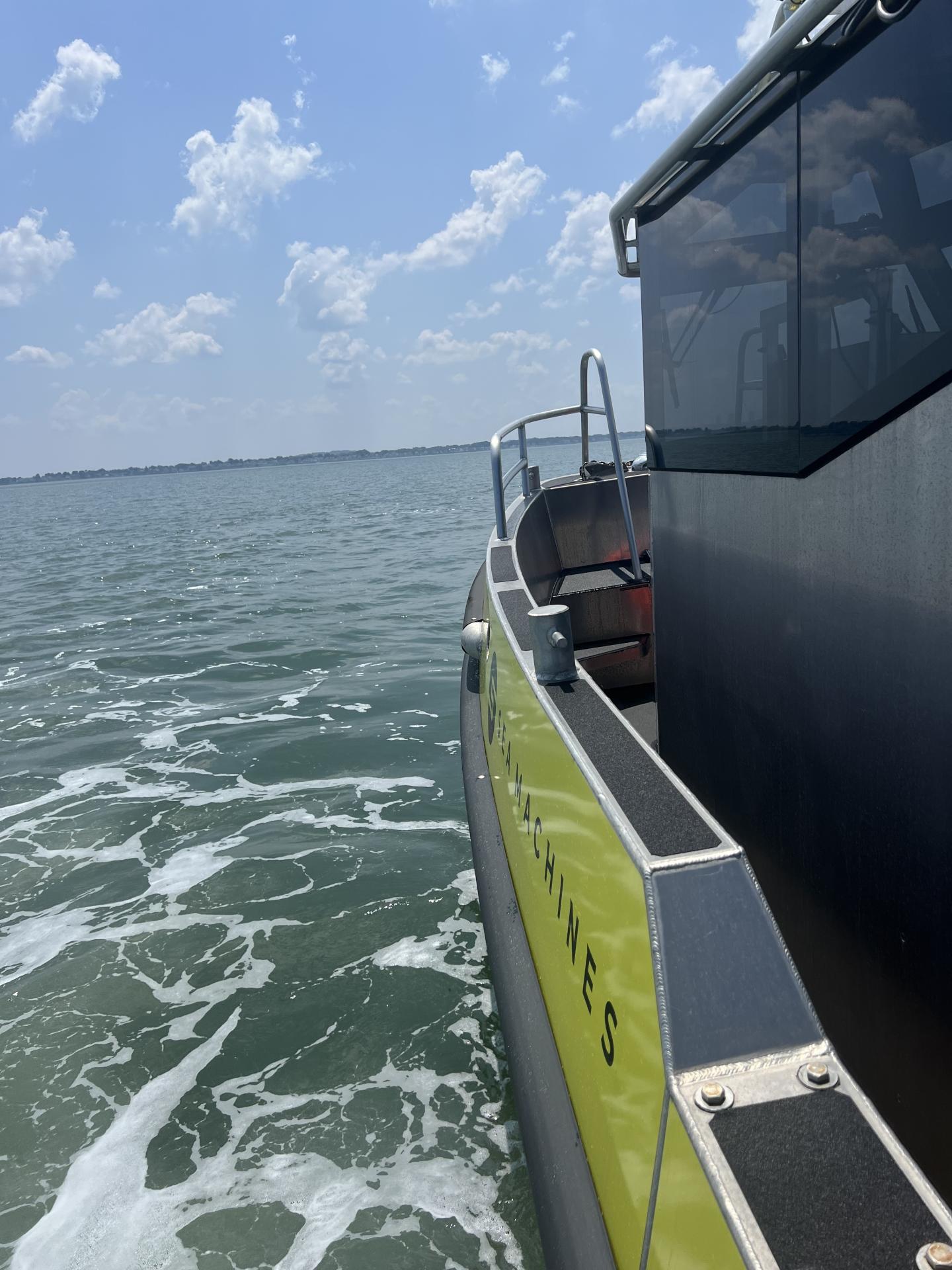Tenant Spotlight: Sea Machines
With technology and artificial intelligence taking the world by storm, one local business is making waves in the marine industry.
Sea Machines is using data-driven intelligence and technology to revolutionize vessel navigation. Founded in Boston, they specialize in automation to create safer waterways all over the globe.

Lauren Lamm is the VP of Business Operations at Sea Machines and joined the team first as a test captain. Before Sea Machines, Lamm was a mariner sailing in the Gulf of Mexico. Returning to Boston and taking on her role at Sea Machines was the “best of both worlds” as it allowed Lamm to be on the water during the day and at home at night.
As a test captain, it was Lamm’s job to test all the software on the autonomous vessels and ensure it was intuitive for mariners to use. Her goal was to make sure that “you don’t need a software engineering degree to use it,” says Lamm. Today, Lamm wears a lot of hats at Sea Machines, including running the engineering team.
Put simply, marine automation is “using technology to increase efficiency and safety of vessel movements,” according to Lamm. Sea Machines offers products that use AI and other smart technology to allow vessels to run autonomously, often reducing human error and collisions, as well as becoming more fuel efficient. Some of the vessels that use Sea Machines’ technology include military vessels such as the Coast Guard, work boats, survey vessels, tugs, and other small vessels. Sea Machines technology is in use all around the globe.
Sea Machines is also one of the only companies that will do a “retro fit instead of having to build a whole new vessel,” says Lamm. “We can integrate with steering and propulsion” to turn manual boats into autonomous ones. Since many of their vessels are boats who had the products installed, they can still be driven manually, another unique aspect of Sea Machines.

Sea Machines’ test vessel is the bright yellow boat you may have seen moving around the harbor. This vessel, the SMR Maverick, is used for on-the-water testing five days a week. Before any new code is released, all the features of the system are put through vigorous testing on the vessel.
In addition to using the new features of the system, it is the test engineer’s job to “try to break” the existing features, says Lamm. During these tests, they will try to “do something a user would do” so the team can catch any potential bugs and resolve them immediately.
Lamm notes how Boston Harbor is an advantageous location for developing their technology because “we categorize what we are seeing” and it is great to train the software to recognize all the vessels on the harbor, including “kayakers, container ships, pilot vessels, ferries, anchorages … the Constitution!” Using Boston Harbor as their “playground” is a great way to train the automation to recognize a variety of different types of traffic and obstacles and how to react to it. Lamm estimates that more than 8,000 hours of testing have been done in Boston. There are “nothing but positives in Boston Harbor,” says Lamm.
Something Lamm really appreciates about her role at Sea Machines is being so close to her work. She loves "seeing the development of this technology and then being able to see it in action in the Harbor." And as a mariner, Lamm is excited to support Sea Machines' mission of making maritime activity safer. "I just can't say enough good things about it."
Learn more about the products Sea Machines offers and how their technology can work for you by visiting their website.
